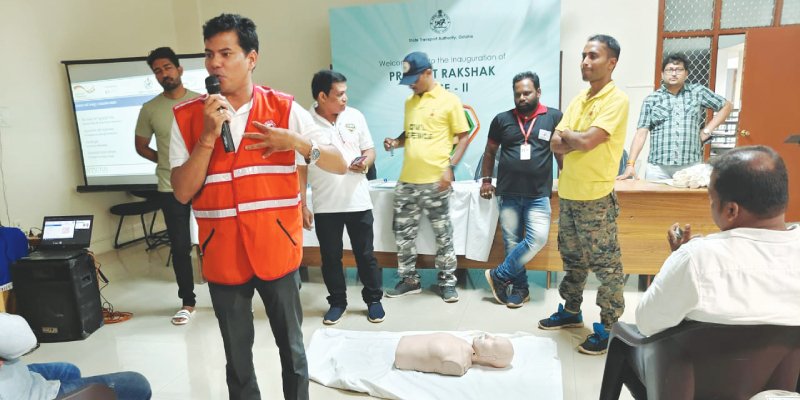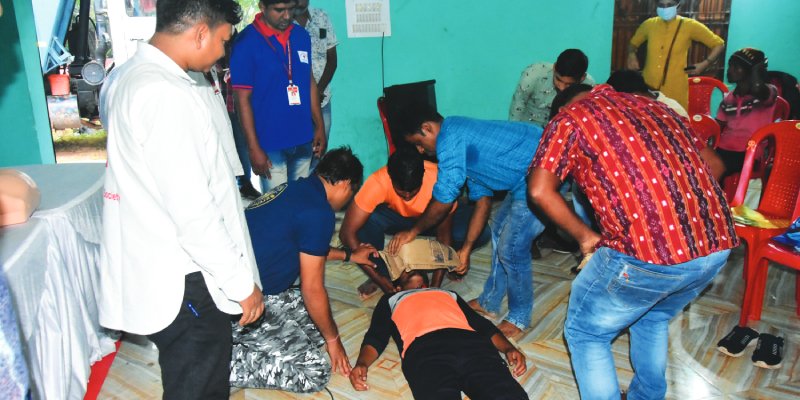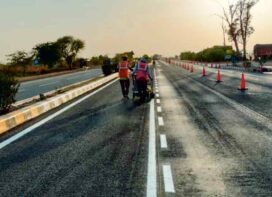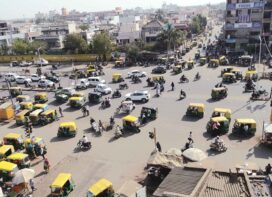
Sanjay Kumar Biswal, Joint Commissioner Transport, Road Safety, Government of Odisha
In Odisha, annually more than 5,000 lives are lost in road accidents. This has serious impact on families and the economy. Road safety is a high priority area for Odisha Government, states Sanjay Kumar Biswal, Joint Commissioner Transport, Road Safety, Government of Odisha.
Historically, Odisha has scored 66% and categorized as ‘high performer’ in implementing road safety measures during audit conducted by the Supreme Court Committee on Road Safety (SCCRS). During the field visit, the SCCRS audit team rated certain initiatives especially Project Rakshak, Vahak, DEESHA and National Road Safety Short Film Festival as best practices and suggested recommendation to neighbouring states.
30 Weeks-30 Districts-300 Master Trainers-30000 First Responders
In a road accident situation, the first hour after the incident, often called the ‘golden hour’ is the most critical for saving lives. At least 50 per cent of the fatalities can be averted, if victims are provided medical care within the first hour. In such cases, it is very critical that ‘First Responders’ staying or working close to the accident sites like eateries or different business establishments are properly trained to handle the accident scenario.
Odisha government conceptualised a First Responders’ Training Programme or Project Rakshak with an aim to train and empower 30,000 first responders staying near accident prone areas. Till date, around 11000 first responders have been trained across the state. This capacity building programme is being organised by Commerce & Transport Department in partnership with Deutsche GIZ and Indian Red Cross Society, Odisha State branch. The state machinery also introduced a reward scheme of two thousand rupees for the people or ‘Good Samaritans’ who help road accident victims.
The programme will be conducted in two phases. In the first phase, 300 Master Trainers will be trained in Training of Trainers (TOTs) by experts from Automotive Skills Development Council (ASDC). Master Trainers include volunteers from Indian Red Cross Society, Odisha State Branch and NGOs across the state. The TOTs will be conducted at 10 places across the state- Bhubaneswar, Cuttack, Berhampur, Sambalpur, Balasore, Koraput, Phulbani, Sundergarh, Keonjhar and Bhawanipatna.
After the TOT, in the second phase these 300 Master Trainers will go to accident prone areas in all the 30 districts and train & empower people to render help to the victims of road accidents. They will be equipped to administer first aid and pre-hospital trauma care to accident victims within the golden hour.

Vahak
About 21 % of fatal road accidents in the state involve Heavy Motor Vehicles. Most of the HMV drivers are neither formally trained nor properly tested before they start driving the vehicles on the road. In view of this, Lead Agency on Road Safety, State Transport Authority has started a refresher training programme ‘Vahak’ for Heavy Motor Vehicle (HMV) drivers of the state at HMV Driver’s Training Institute, Chhatia, Jajpur.
The training comprises of three-days residential programme with the modules of training on road safety, road behaviour, fuel saving, familiarization of BS-VI engine, First Aid, HIV awareness, yoga and a complete health check-up. Under this project about 1500 drivers of the Odisha Mining Corporation have been trained at the driving institute till date. The Odisha government aims to scale up and train around one lakh HMV Drivers across the state.
With an aim to make roads in Odisha 100% road signage compliant, the state has started a unique initiative of road signage audit. Audit of 3059km of National Highway and State Highway is already completed and work in under progress for another 5000kms.
In a bid to curb road accident fatalities caused by unruly parking of heavy vehicles on the roads, Odisha government has planned to set up truck terminals along the national and state highways. The transport department has asked the collectors to identify a minimum of 10 acre land along the national and state highways in their districts for setting up the terminals. Priority will be given to the districts which have higher accidental death rate.
The terminals will have all amenities and services like restrooms, dhabas, tyre & mechanical repair workshop, vehicle servicing facility, petrol pump and toilets. The aim is to open at least six facilities within two years.
Road Safety training is being provided to engineers, commercial drivers, traffic police personnel, highway engineers and planners in a systematic process through a well-planned training calendar.
With an objective to offer a scientific understanding of the accident investigation processes and its relevance, State-level Crash Investigation Training programme was organised for officials of Police & Transport department. The training focussed on how to provide authentic data of an accident which in turn facilitate the designing of policy-level interventions.
The Transport department has also initiated a capacity building and training programme for road engineers of Odisha. About 200 engineers from Works Department & NHAI took part in the two-day long training programme at HMV Driver Training Institute, Chhatia. Pune-based Central Institute of Road Transport (CIRT) was the knowledge partner for the event. The experts from the institute shared insight into road safety, road safety audit, basic principles like Haddon’ Matrix Safety System approach, Vision Zero, emerging technologies in road designs and construction.
Another initiatives has been a State Level Road Safety & First Aid Training programme for home guards and constables on emergency preparedness and response.

Driving Electronic Enforcement to Save Human Lives (DEESHA) Project
Odisha Transport Department has been placing greater emphasis on managing and operation of existing road networks more efficiently & effectively through implementation of Intelligent Enforcement Management System (IEMS) and Intelligent Traffic Management System (ITMS). This will make commuters abide by strict enforcement policy. The STA, Odisha, has planned to implement the ITMS phase-wise through pilot projects.
The Phase-I pilot project has been implemented in around 140 km stretch on NH-16 between Panikoili to Rameswar with the installation and commissioning of ANPR cameras and Pole Security Cameras to detect vehicles for over speeding, triple riding, wrong lane movement, without a helmet, rash driving, etc.
In the project’s first phase, ITMS devices were installed at 24 central locations on National Highway-16 (Chennai to Kolkata) passing through the state. These devices are connected to the control command centre of NIC in Bhubaneswar city. Also, the registration number information there has been linked to the VAHAN application of the Government of India. Whenever a vehicle moves at speed exceeding the prescribed speed limit, the ANPR camera takes a photo of the vehicle’s number plate, in which the registration number of the vehicle is written. Action is being taken to issue challan after getting the complete information of the above registration number from the VAHAN application.
The project key features are:
- Automatic E-Challan Generation for violating traffic rules.
- Automatic Detection of the missing vehicle as per the centralized database.
- Integrated Traffic Control System comprises of implementation of Adaptive Traffic.
- Control System and utilization of multiple Traffic enforcement.
Way Forward
In Phase II, State Transport Authority (STA), Odisha, has prepared a proposal to scale the ITMS implementation across the state. There are 35 National Highways, covering 5576.37 Km (approx.), and 60 State Highways, covering 4750.47 Km (approx.), passing through the state. For phase II of ITMS project STA, Odisha has identified all the black spots, vulnerable points and significant junctions on National Highways and State Highways. There are 126 black spots on 17 National Highway and 23 black spots on 12 State Highways, respectively. It is proposed to cover all the black spots in the 2nd phase. The system will be enabled with Radar based solar-powered application and integrate with ICCC to drive electronic enforcement against violators.
 TrafficInfraTech Magazine Linking People Places & Progress
TrafficInfraTech Magazine Linking People Places & Progress


